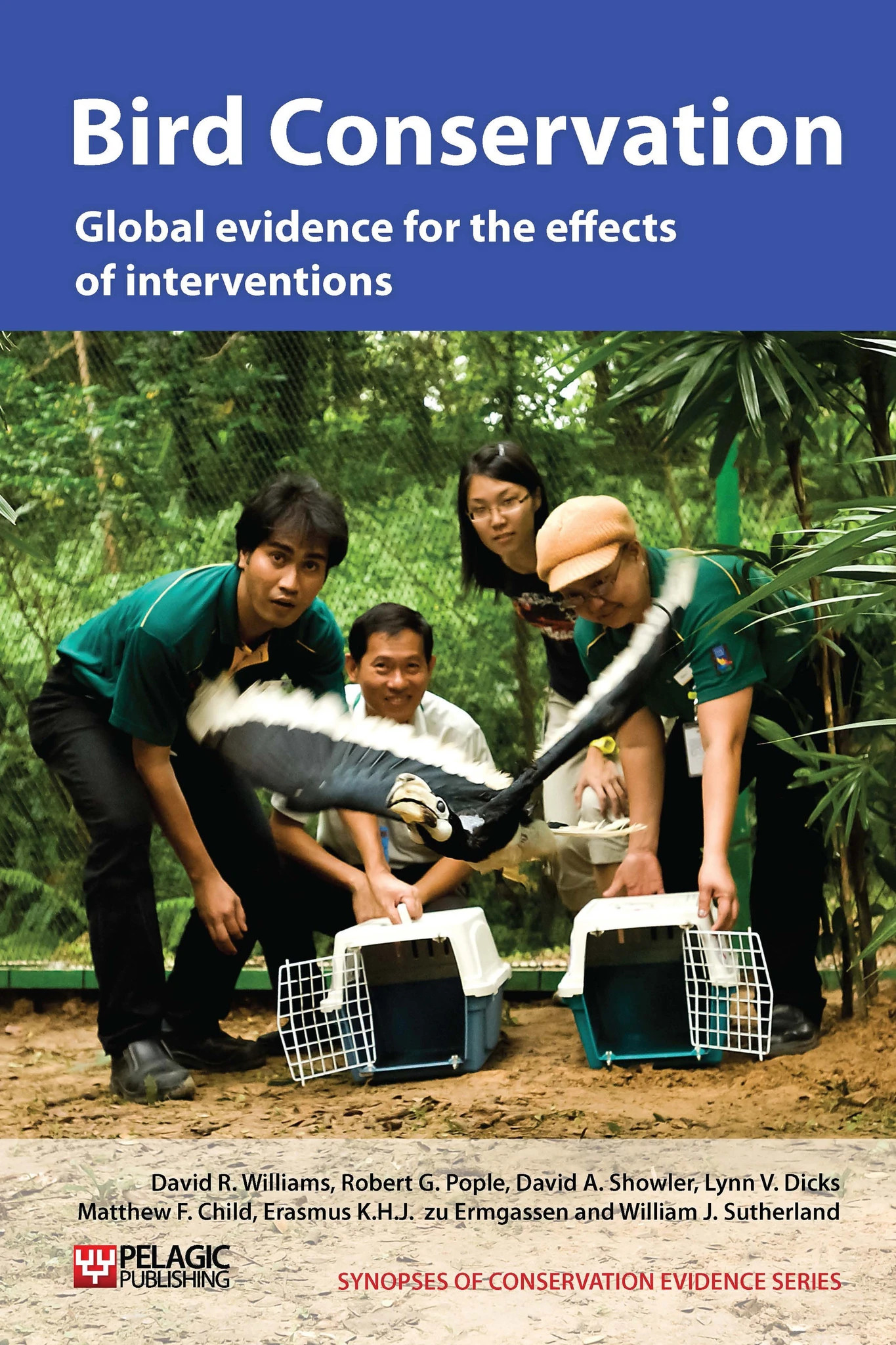Release birds as adults or sub-adults, not juveniles
-
Overall effectiveness category Unknown effectiveness (limited evidence)
-
Number of studies: 8
View assessment score
Hide assessment score
How is the evidence assessed?
-
Effectiveness
35% -
Certainty
15% -
Harms
19%
Study locations
Supporting evidence from individual studies
A ten-year study of a griffon vulture Gyps fulvus reintroduction programme in river gorges in Aveyron, southern France (Sarrazin et al. 1994) found that annual survival rates were similar or higher for birds released as adults (74% in the first year after release and 98% from the second year onwards, 39 birds released), compared to those released as immature (75% during the first two years after release, 20 birds released). This study is also discussed in ‘Release captive-bred individuals’ and ‘Use education programmes and local engagement to help reduce pressures on species’.
Study and other actions testedA replicated study in mallee scrub in New South Wales, Australia, in 1987-90 (Priddel & Wheeler 1996) found that survival of released malleefowl Leipoa ocellata was significantly higher for birds released as sub-adults (14-28 months old) than for birds released as juveniles (3-5 months old) (four sub-adults, of 12 released – 33% survived for 36 days; three for at least 428 days and two for at least 787 days vs. all 24 juveniles were dead within 104 days with at least 83% dead within 36 days). The difference in survival was only evident more than eight days after release, with 50% and 42% of sub-adult and juvenile birds surviving the first eight days respectively. At least 21 juveniles (87%) and seven sub-adults (58%) were killed by predators (mainly foxes Vulpes vulpes). Eggs were collected from the wild and artificially incubated and the chicks fed on seeds, mealworms and vegetables before release.
Study and other actions testedA replicated study over 12-years (Sarrazin et al. 1996) of the same programme as in Sarrazin et al. 1994, found that the nesting success of griffon vultures Gyps fulvus released at the age of three or more (0.42 fledglings/pair for 103 nesting attempts) was significantly lower than that of younger releases and wild-bred birds (0.82 young/pair for 11 attempts). This difference was partially due to lower hatching success for older released birds (55% hatching success for 79 eggs), compared with younger releases and wild-bred birds (75% for 11 eggs). The overall success of the programme is discussed in ‘Release captive-bred individuals into the wild to restore or augment wild populations’.
Study and other actions testedA 1997 review of the Hawaiian goose (nene) Branta sandvicensis reintroduction programme (Black et al. 1997) concluded that birds released into temporary exclosures before fledging survived better than older birds released in exclosures with their wings clipped. This study is discussed in more detail in ‘Release captive-bred individuals into the wild to restore or augment wild populations’.
Study and other actions testedA replicated study at a desert steppe site in 1992-4 in southwest Saudi Arabia (Combreau & Smith 1998) found that houbara bustards Chlamydotis undulata macqueenii released as sub-adults had higher survival than those released as chicks, except when released with their wings clipped (48% survival for 59 unclipped sub-adults released in 1992-4 vs. 36% of 14 chicks released in 1993 and 17% of 12 sub-adults with clipped wings released in 1992). Details of the chick releases are discussed in ‘Release birds in ‘coveys’’. This study is also discussed in ‘Release captive-bred individuals’ and ‘Use holding pens at release sites’. The effect of predator removal is discussed in ‘Control predators not on islands’.
Study and other actions testedA before-and-after study from the Aleutian Islands, Alaska, USA on the cackling goose Branta hutchinsii recovery programme (USFWS 2001) found that releasing young geese was less successful than other strategies (see ‘‘Clip birds’ wings on release’ and ‘Release birds in ‘coveys’). However, the authors note that the release of captive-bred geese was not very successful overall. This study also investigates the effect of Arctic fox Alopex lugopus control on breeding islands (see ‘Predator control on islands’).
Study and other actions testedA 2007 review of northern bald ibis (waldrapp) Geronticus eremite conservation (Bowden et al. 2007) found no differences in survival between birds released in Israel as breeding adults, juveniles or fledglings. All 56 birds released became emaciated and disorientated and formed poor social bonds. This study is also discussed in ‘Release captive-bred individuals into the wild to restore or augment wild populations’, ‘Use captive breeding to increase or maintain populations’, ‘Artificially incubate and hand-rear birds in captivity’, ‘Use holding pens at release sites, ‘Clip birds’ wings on release’, ‘Use microlites to help birds migrate’ and ‘Foster birds with non-conspecifics’.
Study and other actions testedA review of black stilt (kaki) Himantopus novaezelandiae releases in South Island, New Zealand, between 1993 and 2005 (van Heezik et al. 2009) found that 20% of 150 birds released as juveniles (60-90 days old) and 13% of those released as sub-adults (nine months old) were alive two years after release (with 25 juvenile releases and 52 sub-adults not yet at breeding age). Neither group was more likely to be seen at the release site. Eggs came from both wild and captive birds and were artificially-incubated until hatching. This study is discussed in more detail in ‘Release captive-bred individuals’ and ‘Release birds in groups’.
Study and other actions tested
Where has this evidence come from?
List of journals searched by synopsis
All the journals searched for all synopses
This Action forms part of the Action Synopsis:
Bird Conservation
Bird Conservation - Published 2013
Bird Synopsis





)_2023.JPG)














